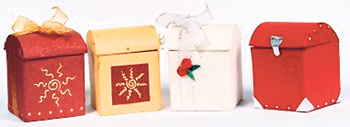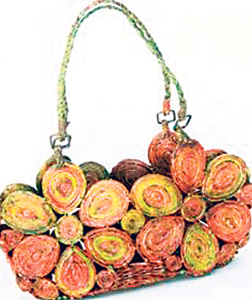| What can you do with recycled paper? The possibilities are endless, says Sagara Ranga Liyanage. Handmade paper products have become increasingly popular around the world for their beauty and high quality.
Handmade paper products are more environmentally friendly than even paper recycled by machines, for their manufacture doesn’t involve the use of harmful chemicals. Around the world there are many craftspeople who produce unique handmade paper and handmade paper products.
 |
| Sagara Ranga Liyanage |
Ranga specializes in handmade greeting cards. He began his greeting card business in a small way when he encouraged his sister to turn her hobby of making greeting cards using pressed flowers, into a business. To help start her off he took three samples of her cards to almost every stationer and bookshop in Kandy. Everywhere he was met with rejection: “Handmade cards don’t sell” they told him. He decided to try one last stationery shop before giving up for the day. To his delight the proprietor was impressed and wanted Ranga to bring him more.
After his sister found a job in Colombo, Ranga decided to continue the handmade greeting card business. He learnt about handmade paper from a government sponsored crafts exhibition at the BMICH. Fascinated by the concept of handmade paper, its eco-friendly attributes and its unique texture and appearance, Ranga points out that it requires 17 large trees to produce a ton of paper using virgin pulp and that an average office worker throws away 35-50 kg of paper per year. Using handmade paper not only saves trees, but also produces 90% less wastewater and reduces air pollution by 70%. The only drawback is that handmade paper tends to be more expensive because of the effort involved in its production, but its environmental benefits make it worth the price.
How is handmade paper made? There are two ways, points out Ranga, one using natural fibre such as hay and banana tree fibre and the second, using used paper. The latter is easier. You have to first soak the paper in water and then grind it to form a pulp. If required you can add colour and even dry flowers and leaves to the pulp for decorative effect. The pulp is then spread out over a wide mesh in a water bath and carefully lifted out. You then have to overturn the pulp, now a flat layer at the bottom of the mesh, onto a sheet of cloth and allow it to dry. Once dry, the paper is ready for use. Making handmade paper using natural fibre requires a longer and more complex process although the final product is more attractive.
 |
Ranga first targeted the tourist market and restricted his themes to motifs such as traditional masks and sesath. However, finding a market for his products was still a challenge. Sometimes he would have to visit a store over ten times just to get an interview with the manager. He finally managed to attract the attention of a leading department store in Colombo. They are now his leading buyers and this has helped him improve his creativity and presentation to target a wider range of customers.
A new chapter to Ranga’s handmade paper story opened when a friend working at a tourist shop introduced him to two foreigners who were impressed with his work. This meeting marked Ranga’s introduction to the export market. Before they left the country they bought up his entire stock of cards and continue to buy from him today.
Ranga’s business continues to grow. He employs eight people in his workshop at home and together they form Earthbound Creations, designing and producing an endless variety of greeting cards. Ranga points out that no two cards are ever alike, in fact no two sheets of handmade paper are alike. “It’s not like producing things using machines,” he says, “our trade is very special because everything is done manually, a lot of attention and effort goes into everything we produce.”
One of Ranga’s major challenges is meeting the increasing demand for his goods. As everything has to be done by hand there is a limit to production. While greeting cards are his main line, he makes wedding cake boxes, jewellery boxes, mouse pads, CD covers and notebooks among other things.
Ranga also hopes to introduce a revolutionary new product to the Sri Lankan market: newspaper accessories. Using plain old newspaper, such as the one you are reading, Ranga creates coasters, handbags and pencil holders.
By first rolling the newspapers into narrow strips and then pressing them Ranga glues them together to create what he needs.
He adds finishing touches by dying it and adding coat of varnish. The finished product is remarkably strong and durable. He learnt the craft at a government sponsored workshop in the Philippines and values its eco friendly qualities and its artistic uniqueness.
From selling ten cards to a small stationery store to exporting his products to European buyers, Ranga has come a long way in five years.
Of the years in-between he recalls long bus journeys to buy materials for his work, rejections from retailers and hard work, but cites his persistence and the support of his family as the reason for his success.
| 


